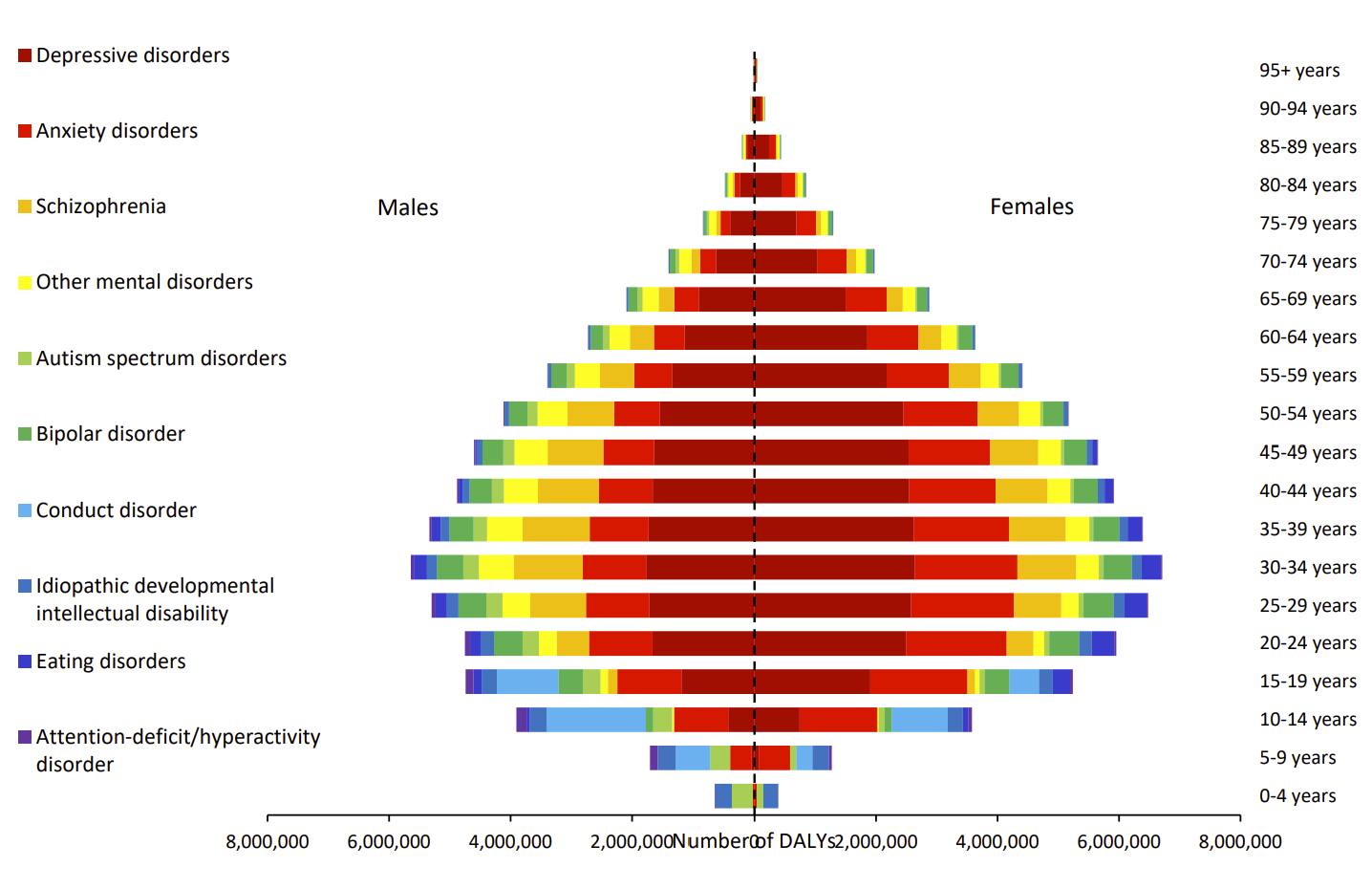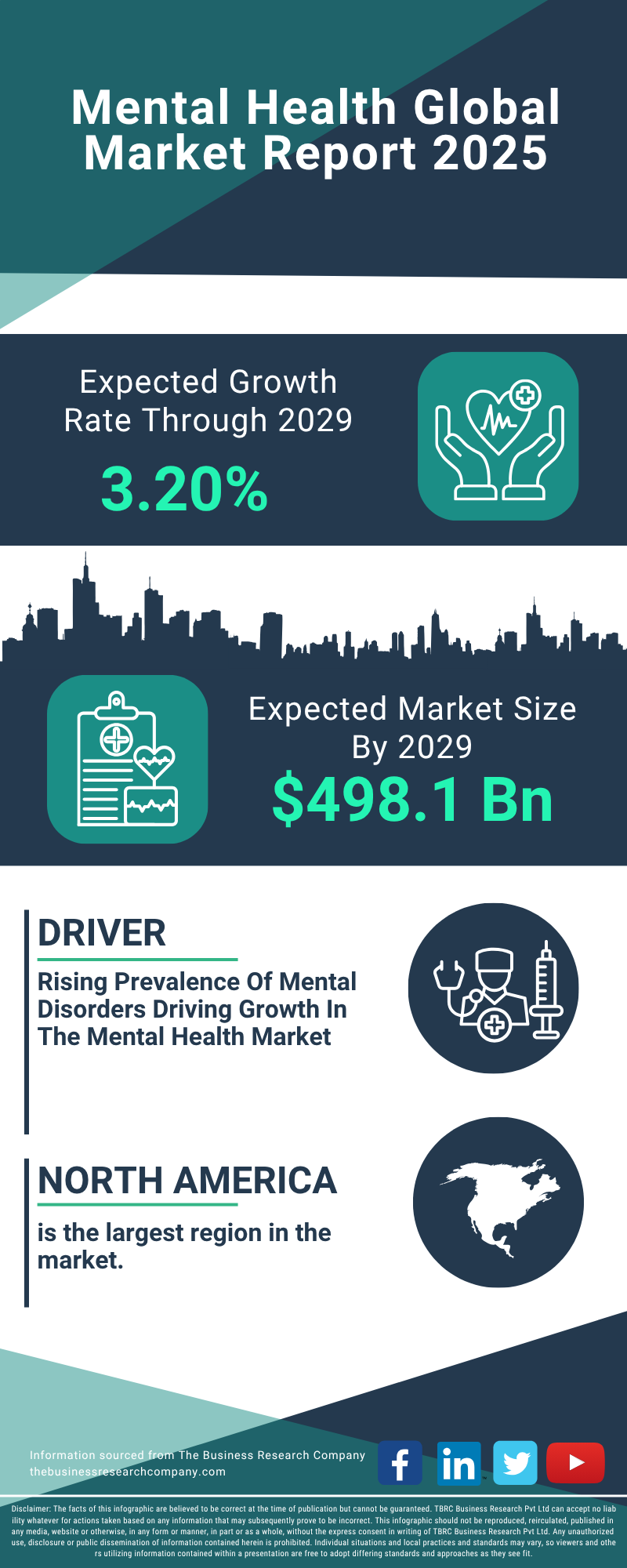BREAKING: September 2, 2025
World Health Organization releases alarming new data showing unprecedented global mental health crisis
In a groundbreaking announcement that has sent shockwaves through the global health community, the World Health Organization (WHO) revealed today that over one billion people worldwide are currently living with mental health conditions. This staggering statistic, released in two comprehensive reports – "World Mental Health Today" and the "Mental Health Atlas 2024" – represents not just numbers on a page, but a profound human crisis that demands immediate, coordinated global action.
The implications of this revelation extend far beyond healthcare systems. We're witnessing a phenomenon that touches every corner of society, from boardrooms to classrooms, from developing nations to advanced economies. This isn't just a health issue – it's an economic, social, and humanitarian emergency that will define how we approach human wellbeing in the coming decades.
Dr. Tedros Adhanom Ghebreyesus, WHO Director-General, emphasized the urgency: "Transforming mental health services is one of the most pressing public health challenges. Investing in mental health means investing in people, communities, and economies – an investment no country can afford to neglect."
The Numbers That Define Our Global Mental Health Reality
Global Prevalence
1+ Billion
People worldwide living with mental health disorders
Suicide Deaths
727,000
Lives lost to suicide in 2021 alone
Economic Impact
$1 Trillion
Annual global cost of depression and anxiety alone
Healthcare Spending
2%
Median government spending on mental health (of total health budgets)

Source: Institute for Health Metrics and Evaluation - Global Burden of Disease Study
Understanding the Scope: More Than Just Numbers
The WHO's latest findings reveal that mental health conditions represent the second biggest reason for long-term disability globally, contributing to significant loss of healthy life years. But behind these statistics lies a more complex reality that affects every demographic, every profession, and every community worldwide.
Gender Disparities in Mental Health
The data reveals troubling gender disparities, with women being disproportionately affected by mental health conditions overall. While the prevalence of mental health disorders varies by gender, anxiety and depressive disorders emerge as the most common types affecting both men and women. This disparity isn't merely statistical – it reflects deeper societal issues including economic inequality, violence, and systemic discrimination that particularly impact women's mental health.
The Youth Mental Health Emergency
Perhaps most alarming is the crisis among young people. Suicide remains a leading cause of death among youth across all countries and socioeconomic contexts. The current trajectory suggests we're failing an entire generation, with devastating implications for future societal wellbeing and productivity. The digital age, while offering unprecedented connectivity, has also introduced new stressors and mental health challenges that previous generations never faced.

Source: World Economic Forum - Children's Mental Health Analysis
The Economic Earthquake: $1 Trillion and Counting
The economic implications of the global mental health crisis extend far beyond healthcare costs. Depression and anxiety alone cost the global economy an estimated $1 trillion annually, but this figure represents only the tip of the iceberg. The indirect costs – particularly in lost productivity, reduced innovation, and diminished human capital – paint a picture of economic devastation that rivals any financial crisis in modern history.
The Productivity Paradox
While businesses invest billions in efficiency technologies and productivity tools, they simultaneously face massive losses due to mental health-related absenteeism, presenteeism (being physically present but mentally disengaged), and high turnover rates. Companies are beginning to recognize that employee mental health isn't just a moral imperative – it's a business necessity.
Economic Impact Breakdown:
- Healthcare Costs: Direct medical expenses for mental health treatment and medication
- Lost Productivity: Reduced work output, increased sick days, and decreased quality of work
- Social Services: Increased burden on social support systems and welfare programs
- Educational Impact: Reduced learning outcomes and increased dropout rates
A Tale of Two Worlds: Global Disparities in Mental Healthcare
The WHO report exposes stark inequalities in mental health resource allocation and access to care. While high-income countries spend up to $65 per person on mental health services, low-income countries spend as little as $0.04 per person – a disparity of more than 1,600 times. This isn't just about money; it's about fundamental human dignity and the right to mental healthcare.

Source: Market.us - Global Mental Health Needs Analysis
The Treatment Gap Crisis
In low-income countries, fewer than 10% of people with mental health conditions receive adequate care, compared to over 50% in higher-income nations. This treatment gap isn't just a statistic – it represents millions of individuals suffering in silence, families torn apart, and communities struggling without support. The global median of 13 mental health workers per 100,000 people masks extreme shortages in regions that need help the most.
Low-Income Countries
$0.04 per person annual spending
<10% receive adequate care
Middle-Income Countries
Varies widely by region
20-40% receive adequate care
High-Income Countries
Up to $65 per person
>50% receive adequate care
The Pandemic's Lasting Shadow: How COVID-19 Transformed Mental Health
The COVID-19 pandemic didn't just create a global health crisis – it fundamentally altered the landscape of mental health worldwide. The WHO previously reported a 25% increase in anxiety and depression prevalence during the pandemic, and the effects continue to reverberate through society in 2025. The pandemic exposed and exacerbated existing mental health vulnerabilities while creating entirely new categories of psychological distress.

Source: The Lancet - COVID-19 Mental Health Impact Study
Long-term Pandemic Effects on Mental Health
Pathways to Healing: Evidence-Based Solutions for the Global Crisis
Despite the overwhelming nature of the crisis, the WHO reports also highlight encouraging developments and evidence-based solutions that offer hope. The path forward requires coordinated action across multiple sectors, innovative approaches to service delivery, and a fundamental shift in how societies perceive and prioritize mental health.
The WHO's Four-Pillar Approach
1. Equitable Financing
Governments must dramatically increase mental health spending beyond the current 2% median, ensuring resources reach underserved populations and communities.
2. Legal and Policy Reform
Implementing rights-based mental health legislation that protects human dignity and ensures access to quality care without discrimination.
3. Workforce Investment
Sustained investment in training, supporting, and retaining mental health professionals, particularly in underserved regions.
4. Community-Based Care
Expanding person-centered, community-based care models that integrate mental health into primary healthcare systems.
Innovative Approaches Showing Promise
Looking Ahead: Mental Health in 2030 and Beyond
The current trajectory toward the United Nations Sustainable Development Goal of reducing suicide rates by one-third by 2030 shows we're falling dramatically short. At current progress rates, only a 12% reduction will be achieved. However, this sobering reality also presents an opportunity for transformative change if we act decisively now.
Emerging Trends Shaping Mental Health's Future
Artificial Intelligence and Personalized Care
AI-powered diagnostic tools and personalized treatment plans are revolutionizing mental healthcare delivery, offering hope for more effective, accessible treatment options.
Precision Mental Health
Advances in genetics and neuroscience are enabling more targeted treatments based on individual biological and psychological profiles.
Global Mental Health Diplomacy
International cooperation and knowledge sharing are becoming essential components of addressing the global nature of mental health challenges.

Source: The Business Research Company - Mental Health Market Report 2025
Frequently Asked Questions
What are the most common mental health conditions globally?
According to the WHO report, anxiety and depressive disorders are the most prevalent mental health conditions worldwide, accounting for more than two-thirds of all mental health disorders among both men and women across all age groups and income levels.
How has COVID-19 impacted global mental health statistics?
The COVID-19 pandemic triggered a 25% increase in anxiety and depression prevalence worldwide. The effects continue to influence mental health statistics in 2025, with lasting impacts from social isolation, economic uncertainty, and disrupted life patterns contributing to the current crisis levels.
What is the economic impact of the global mental health crisis?
Depression and anxiety alone cost the global economy an estimated $1 trillion annually. This includes direct healthcare costs and indirect costs from lost productivity, reduced innovation, and diminished human capital across industries worldwide.
Why are suicide rates not declining as expected?
Despite global efforts, progress in reducing suicide mortality is insufficient to meet the UN Sustainable Development Goal of a one-third reduction by 2030. Current trajectories suggest only a 12% reduction will be achieved, highlighting the need for more comprehensive prevention strategies and mental health support systems.
What solutions does the WHO recommend for addressing this crisis?
The WHO calls for four key actions: equitable financing of mental health services, legal and policy reform to uphold human rights, sustained investment in the mental health workforce, and expansion of community-based, person-centered care models integrated into primary healthcare systems.
How can individuals contribute to addressing the mental health crisis?
Individuals can help by reducing stigma through open conversations, supporting mental health policies in their communities, advocating for workplace mental health programs, seeking help when needed, and supporting organizations that provide mental health services and research.
The Time for Action is Now
The WHO's latest report isn't just a collection of statistics – it's a call to action for governments, organizations, communities, and individuals worldwide. With over one billion people affected by mental health conditions, we cannot afford to treat this as someone else's problem.
Advocate for Policy Change
Support mental health legislation and increased funding in your community
Break the Stigma
Start conversations about mental health in your workplace and community
Seek and Offer Support
Get help when needed and support others in their mental health journey
Every action matters. Every conversation counts. Every person deserves access to mental healthcare.
Together, we can transform the global mental health crisis into a global mental health revolution.
Conclusion: A Global Challenge Requires Global Solutions
The WHO's revelation that over one billion people worldwide are living with mental health conditions marks a pivotal moment in global health. This isn't just a number – it represents an unprecedented humanitarian challenge that demands immediate, comprehensive, and sustained action from every sector of society.
The statistics are sobering: 727,000 lives lost to suicide annually, $1 trillion in economic losses, and vast disparities in care access between rich and poor nations. Yet within this crisis lies opportunity – the chance to fundamentally transform how we approach mental health, moving from reactive treatment to proactive prevention and from stigmatization to support.
The path forward is clear but challenging. It requires political will to increase mental health funding beyond the inadequate 2% median, legislative courage to reform outdated laws, and societal commitment to breaking down barriers to care. Most importantly, it requires each of us to recognize that mental health is not a luxury – it's a fundamental human right.
As we move toward 2030 and beyond, the choices we make today will determine whether the next WHO report tells a story of continued crisis or unprecedented healing. The billion people currently struggling with mental health conditions are counting on us to choose transformation over status quo, hope over despair, and action over indifference. The time for that choice is now.
